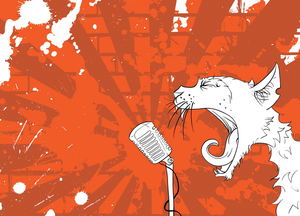Feedback
A few littleBits electronics and a lot of cutting, fastening, and fitting finally delivers a working automatic cat feeder.

Lead Image © 1507kot, 123RF.com
A few littleBits electronics and a lot of cutting, fastening, and fitting finally delivers a working automatic cat feeder.
One of the most popular DIY projects you'll find on the Internet is an automatic pet feeder. Although automatic feeders can serve the useful purpose of feeding your pets while you are away, they serve the even more useful purpose of disassociating the pet owner from the pet's perception of human as the dispenser of food. The Pavlovian response of the pet as the owner enters the kitchen is thus transferred to the whirring of a motor as food magically appears in the dish. In this article, I try my hand at creating a dual pet feeder for my two cats.
One of my requirements was that the food had to be fully enclosed, so the kibble would not be exposed to the air to give off tempting aromas and would be inaccessible to prying paws. I decided to accomplish this by building a small tub that rotated within a larger tub, matching open slots through which the food falls. This design required that the tubs fit fairly snuggly, without touching, so kibble would not be trapped in between.
I used littleBits modules [1] with a Cloud bit to activate servomotors that rotated the inner tub. An IFTTT recipe [2] controlled when the mechanism was activated and followed the cats' usual feeding schedule.
[...]
Pages: 4
Price $15.99
(incl. VAT)